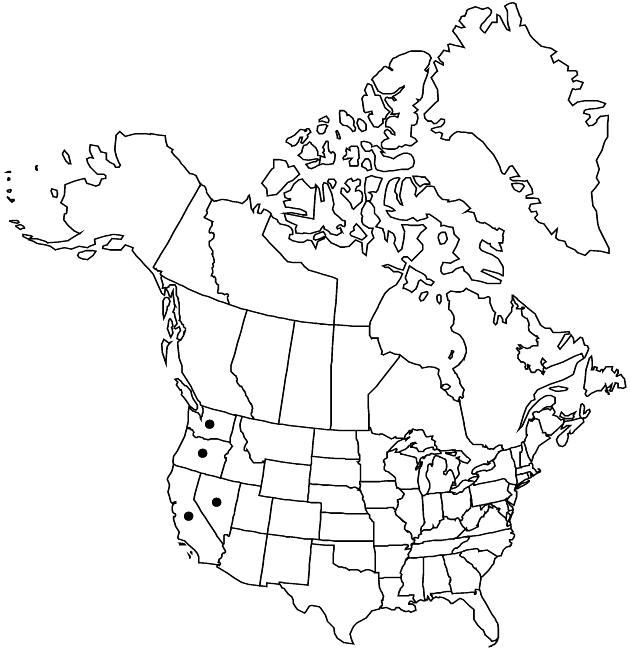Balsamorhiza hookeri
Trans. Amer. Philos. Soc., n. s. 7: 349. 1840.
Plants 10–30 cm. Basal leaves: blades usually gray-green, narrowly to broadly lanceolate or ovate, (8–) 20–30 (–40) × 2–15 cm (1–2-pinnatifid, primary lobes oblong or lanceolate to linear, 5–100 × 0.5–15 mm, secondary lobes usually ± linear, spreading), bases ± truncate to broadly cuneate, ultimate margins usually entire (plane or revolute, ciliate or not), apices obtuse to acute, faces hirsute, sericeous, or strigose (and glanddotted or finely stipitate-glandular). Heads borne singly. Involucres campanulate to hemispheric, 15–30 mm diam. Outer phyllaries ovatelanceolate to lanceolate, 10–24+ mm, seldom surpassing inner, apices acuminate to attenuate (margins usually ciliate). Ray laminae 15–30 (–45) mm. 2n = 38.
Phenology: Flowering Apr–May(–Jul).
Habitat: Rocky outcrops, dry meadows, sagebrush scrublands, basalt scablands (north), dry, open forests (south)
Elevation: (300–)1000–1500(–2900) m
Distribution

Calif., Nev., Oreg., Wash.
Discussion
At one time or another, most species of subg. Balsamorhiza have been synonymized under B. hookeri. Nevertheless, a number of taxa are justifiably segregated as species by their morphologic differences and geographic restrictions. One might logically choose either of two taxonomies: recognizing only two species in the entire genus, one representing subg. Artorhiza and the other subg. Balsamorhiza, or recognizing each slightly differing population as a species. Either course results in an unsatisfactory classification. The present classification is a compromise. A knotty problem persists. A central cluster of populations from eastern Washington to southeastern California display a number of minor and locally discrete morphologies. They tend to be less isolated from each other than are the peripheral populations, although some tend to mimic the latter ones in one or more characteristics. Their evolutionary history may be involved with past hybridizations with each other or with species of subg. Artorhiza, gene drift, and polyploidy. At present, it appears impossible to reach a satisfactory classification.
Selected References
None.
Lower Taxa
"broader" is not a number.